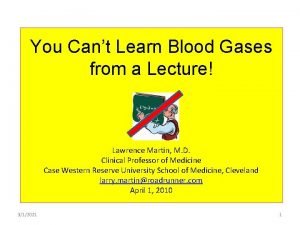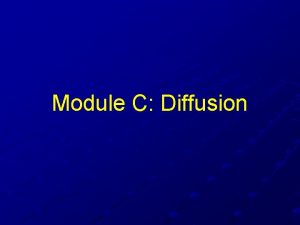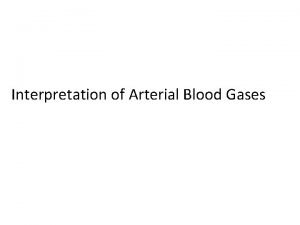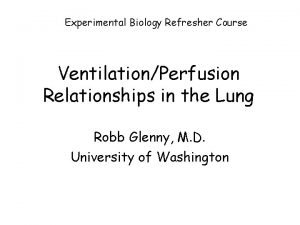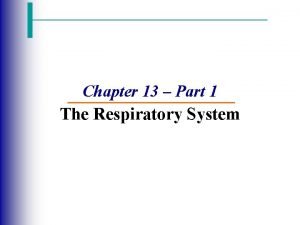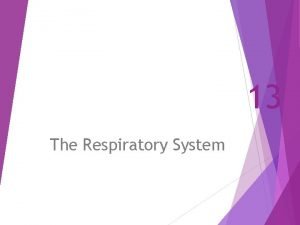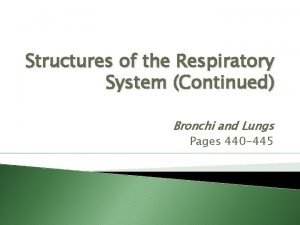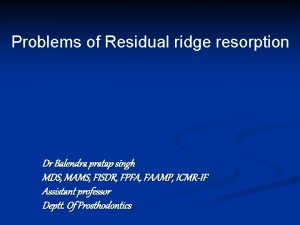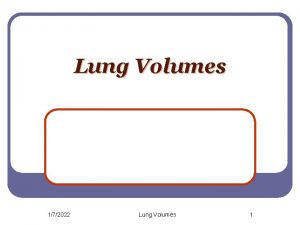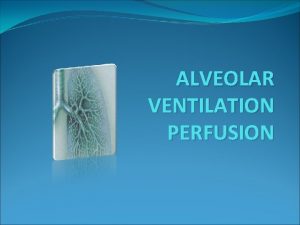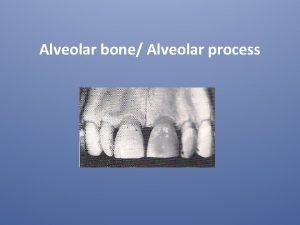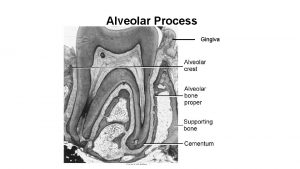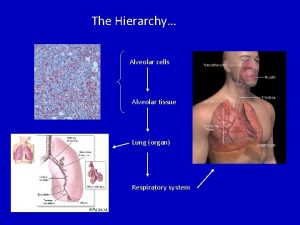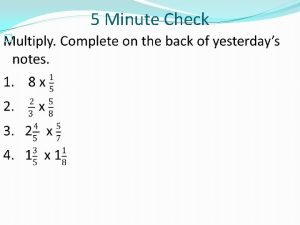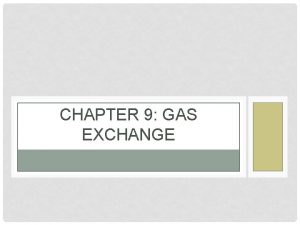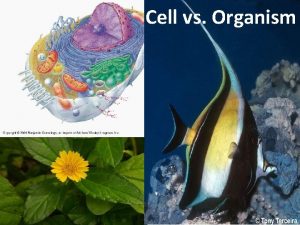Alveolar Gas Exchange Gas Exchange Volumes and Minute











- Slides: 11

Alveolar Gas Exchange

Gas Exchange Volumes and Minute Volumes

Determination of Alveolar and Dead Space Ventilation and Volumes If we take FDCO 2 to be zero (b/c room air is defined as zero): Therefore: One way to easily find CO 2 production: Therefore: And:

What Determines PACO 2 (assuming inspired CO 2 = 0)

What Determines PAO 2 Greater alveolar ventilation or higher inspired O 2 gives higher alveolar O 2; Higher rate of oxygen consumption lowers alveolar O 2.

Can We Combine These into One Overall Relationship to Describe Alveolar Gases? c is the same in both equations (=1 / (PB-PH 2 O)): AND Since c = c:

R: The Respiratory Exchange Ratio Unlike RQ, defined at the respiratory exchanger (alveoli) – otherwise, mathematically the same.

Over and Under Ventilation Hyperventilation -- where elimination of CO 2 is greater than production at the tissue level. • Normally considered as a difference between input (from tissues) and elimination (at exchanger) of blood CO 2. • But, we can also consider a sort of hyperventilation that might occur if we over perfuse the tissues where we consider the effects on tissues (? What controls perfusion? ? ) Hypoventilation -- the opposite What are the acid base disturbances associated with hyper- and hypo-ventilation.

Steady and Non-Steady State Ventilation Recall our multiple stage gas exchange model. In steady-state ventilation: In non-steady state, one or more of these will not be equal.

Let's Combine the Notions on the Last Two Slides: AND

CO 2 – O 2 Diagram and Gas Exchange
 Gas exchange key events in gas exchange
Gas exchange key events in gas exchange Alveolar gas equation
Alveolar gas equation Alveolar gas equation
Alveolar gas equation Delta ag delta hco3
Delta ag delta hco3 Alveolar gas equation
Alveolar gas equation 1° in minutes
1° in minutes Respiratory tree divisions
Respiratory tree divisions Respiratory membrane
Respiratory membrane Intra alveolar extraction
Intra alveolar extraction Structures of the alveoli and the respiratory membrane
Structures of the alveoli and the respiratory membrane Alveolar crest
Alveolar crest Periodontal ligament definition
Periodontal ligament definition

